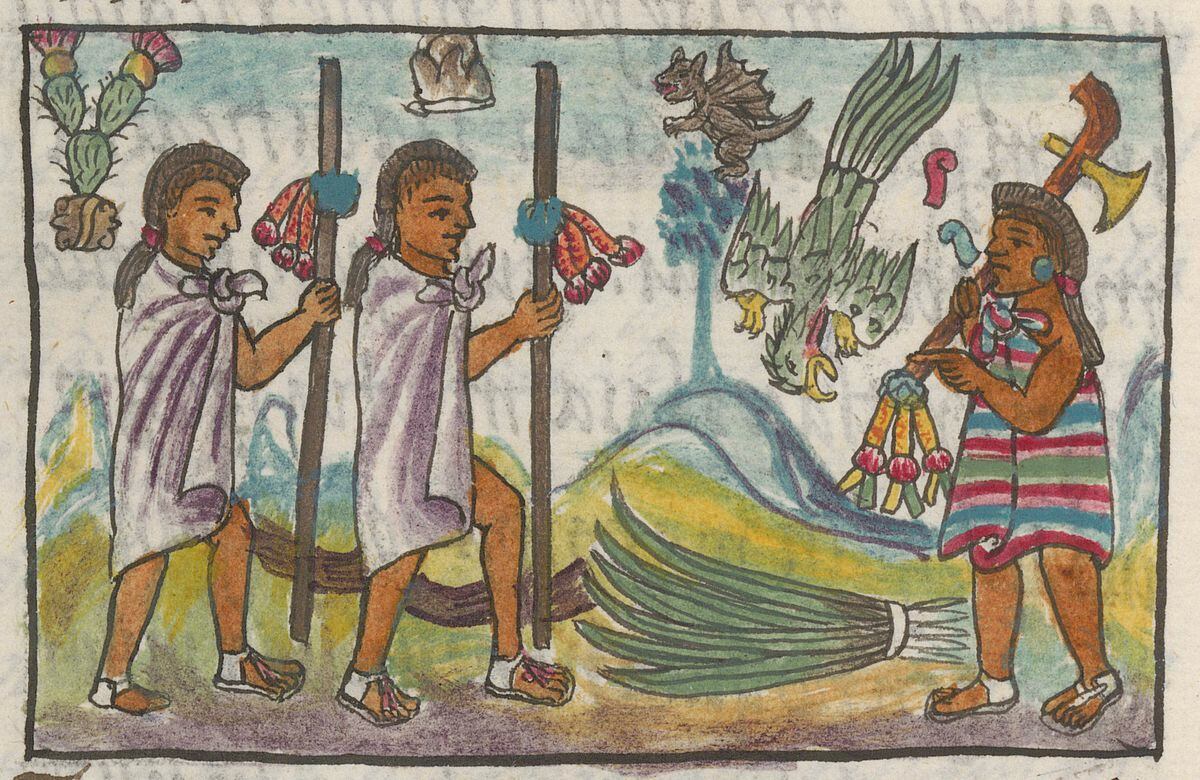The Florentine Codex, written almost 500 years in the past, continues to disclose hidden secrets and techniques and share data in regards to the Indigenous peoples who skilled the autumn of Tenochtitlan within the Sixteenth century. It’s extensively considered essentially the most dependable supply on Mexica tradition, the Aztec empire and the arrival of Spanish conquistadors in what’s now Mexico. Beforehand untranslated Nahuatl texts might doubtlessly reshape the narrative of the Spanish conquest, providing intriguing insights into historic occasions and maybe prompting a reevaluation of sure episodes.
A staff of 68 researchers, scientists and linguists spent seven years digitizing and translating the almost 2,500 pages of a manuscript into fashionable Spanish, English and Nahuatl. Now out there on-line, the mission showcases the unique Spanish and Nahuatl textual content, together with over 2,000 hand-painted illustrations. Funded by the Los Angeles-based Getty Analysis Institute in collaboration with the Laurentian Medici Library in Florence (Italy), “the Florentine Codex is taken into account crucial manuscript of the Sixteenth century and a big Indigenous encyclopedia of its time,” in line with mission chief and Mesoamerica knowledgeable Kim Richter.
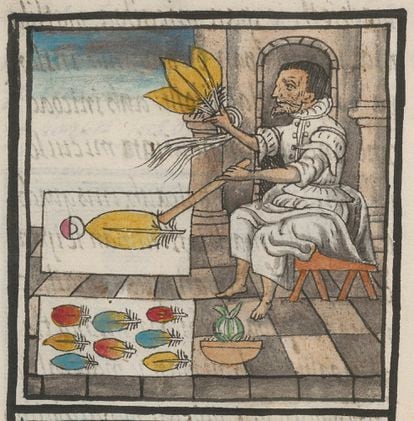
The Florentine Codex is a Sixteenth-century ethnographic analysis examine in Mesoamerica by Bernardino de Sahagún, a Spanish Franciscan friar who devoted most of his life to documenting the Indigenous peoples of Mexico. Indigenous elders, Nahua philologists, scribes and artists known as tlacuilos collaborated with the friar to put in writing and illustrate the 12 books (in three volumes) that make up the Florentine Codex. A few of Sahagún’s collaborators embrace Antonio Valeriano, Alonso Vegerano, Marco Jacobita, Agustín de la Fuente and Pedro de Sanbuenaventura, trilingual college students from the Colegio de la Santa Cruz in Tlatelolco (modern-day Mexico Metropolis). After its completion, the manuscript was despatched to Europe and ultimately ended up within the Medici household library in Florence, therefore its identify.
The Florentine Codex has been out there on the World Digital Library since 2012, however might solely be understood by individuals with intensive data of Sixteenth-century Nahuatl and Spanish. The manuscript spent centuries in oblivion, regardless of being a bilingual main doc of distinctive significance. Written in parallel columns of Nahuatl and Spanish, many of the preliminary focus was on translation of the Spanish parts of the textual content. “Books 1 to 11 nonetheless should be translated from Nahuatl, a mission that started at UNAM [National Autonomous University of Mexico] and continues to be ongoing,” stated Richter. “Berenice Alcántara and Federico Navarrete at the moment are translating Ebook 12, though I might have beloved a Nahuatl translation of all of the books.”
Richter believes Sahagún based mostly a few of his work on the 5 letters that Hernán Cortés wrote to Spain’s King Charles V to report on the conquest of Mexico. She says a complete understanding of all three accounts (Spanish, Nahuatl and the illustrations) is critical to totally comprehend the outdated codex as a result of the narratives of the conquerors and the conquered are sometimes fairly completely different. “The Nahuatl and Spanish texts don’t say fully various things, however the best way they current that historical past may be very completely different.”
Richter famous that in Ebook 12, which focuses on the conquest, the Spanish textual content is written in spare and factual prose. As an example, it offers a brief description of how Montezuma’s surrendered with out a lot resistance. “The Nahuatl textual content describes how the seize of Moctezuma, Itzcuauhtzin and the opposite Aztec leaders was fairly violent. It means that they had been imprisoned and killed by the Spanish,” stated Richter. “The Nahuatl textual content truly tells the story of that invasion and conflict in a extra poetic approach. It doesn’t point out the Indigenous Spanish allies, however quite focuses on how the Tlaxcalans had been betrayed.”
One of many illustrations exhibits the Spanish throwing Moctezuma’s physique into the water, a element that caught the eye of the analysis staff. “In guide 12, all the pictures are black and white. Nevertheless, the artists used a touch of coloration to focus on sure photos and seize the reader’s consideration. They subtly addressed sure passages, like Moctezuma’s dying, with warning on account of Spanish rule. Nevertheless, their intention to recount that historic occasion is clear,” explains Richter.
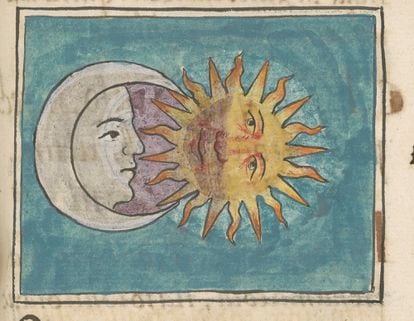
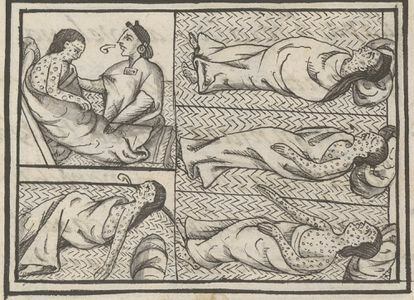
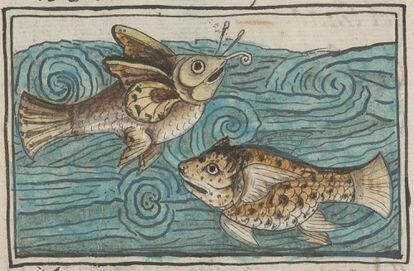
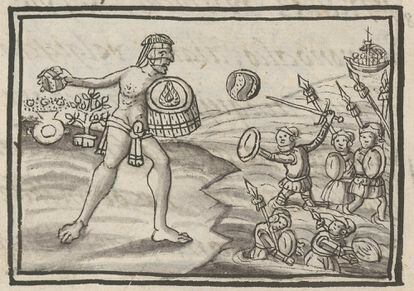
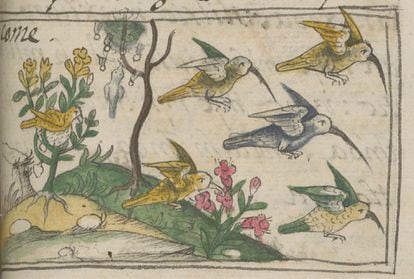
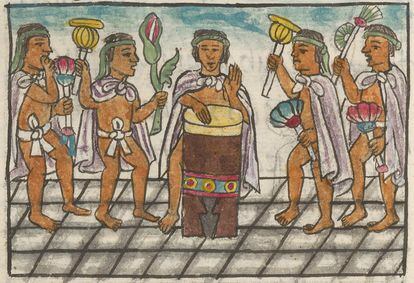
The analysis staff additionally tried to determine all of the contributors to the codex other than Sahagún. The texts originated from many conversations between Sahagún and Indigenous elders that had been documented by his Indigenous college students, notes Diana Magaloni, director of the Historic Americas Artwork Program on the Los Angeles Museum of Artwork. “We now have recognized the distinct kinds of all of the Indigenous artists and scribes,” stated Richter. “Sahagún doesn’t present the names of all artists, and solely mentions three scribes. However we now know there have been 9 scribes, and a few might each write and illustrate.” The analysis staff recognized 22 completely different artists who created the illustrations.
All the Indigenous scribes and illustrators had been younger monks attending the Santa Cruz de Tlatelolco faculty. “A lot of them had been kids of the Nahuatl elite and acquired a humanistic training influenced by the brand new developments in Europe,” stated Richter. Educated on the College of Salamanca in Spain, Friar Bernardino de Sahagún was charged with coaching future Franciscans who would grasp Nahuatl and evangelize in that language. “That type of considering modified by the tip of the Sixteenth century. Books in Nahuatl had been not produced as a result of Spanish establishments realized they couldn’t management the narrative.”
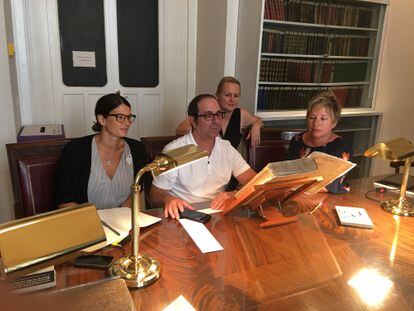
Specialists consider that the authors of the Florentine Codex seemingly contributed to different historic accounts, similar to The Annals of Tlatelolco and the Aubin Codex. “Aubin mentions and depicts Antonio Valeriano, one among Sahagún’s collaborators,” stated Richter. “He was probably the most educated students of that point.” Like fashionable encyclopedias, the Aubin Codex covers numerous matters, together with some past Mexica society, from the angle of Tlatelolco, the city the place it was written.
The importance of the Florentine Codex at the moment
The affect of the Florentine Codex on modern-day Mexico stays important. Nevertheless, the historic narrative taught in lecture rooms typically depicts Indigenous peoples as a relic of the previous, stereotyping them as naive, feeble and childlike people simply conquered by the Spaniards, or as treacherous, violent and malevolent individuals who collaborated with the Spaniards and betrayed their very own.
At a 2019 convention in Zacatecas (Mexico) scholar Eduardo de la Cruz explored these two stereotypes of Mexico’s Indigenous peoples. De la Cruz translated a number of the traditional Nahuatl textual content within the Florentine Codex to a contemporary type of the language spoken within the Huasteca area. He shared them with secondary faculty college students from El Tecomate, Veracruz, who had been uncovered to a unique model of the Spanish conquest for the primary time. “They had been impressed that the Mexicas fought and defended their empire up till [Aztec ruler] Cuauhtémoc was defeated,” stated De la Cruz.
Although this historic account has been round for 5 centuries, they had been by no means taught about it in class. “The federal government lacks didactic supplies on the Spanish conquest that spotlight Indigenous resistance. Regardless of this, Indigenous peoples persist at the moment, combating for his or her rights and selling their language and cultural wealth,” stated De la Cruz, who emphasizes the significance of guaranteeing that such paperwork are publicly accessible. “Particularly for communities which have a connection to this historical past.”
“It’s a debt that we nonetheless owe to the Nahuas and their language,” stated Richter. De la Cruz goes a bit additional. “Altering the best way youthful generations understand Indigenous peoples helps them join with their ancestors and take pleasure of their Indigenous roots, quite than feeling ashamed of them. And in the event that they present curiosity in studying, writing, and talking Nahuatl, the language will thrive and evolve, similar to Spanish and English do.”

Join our weekly publication to get extra English-language information protection from EL PAÍS USA Version.

